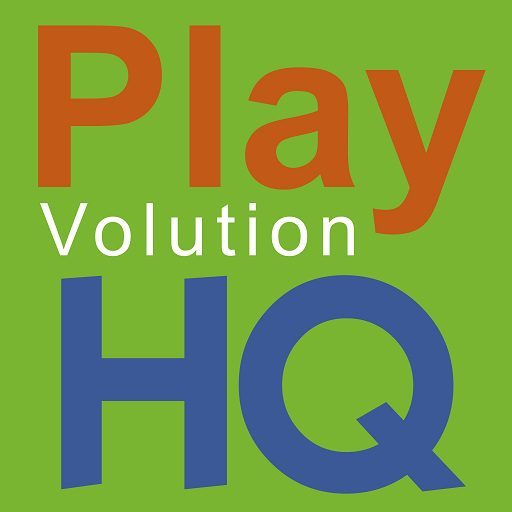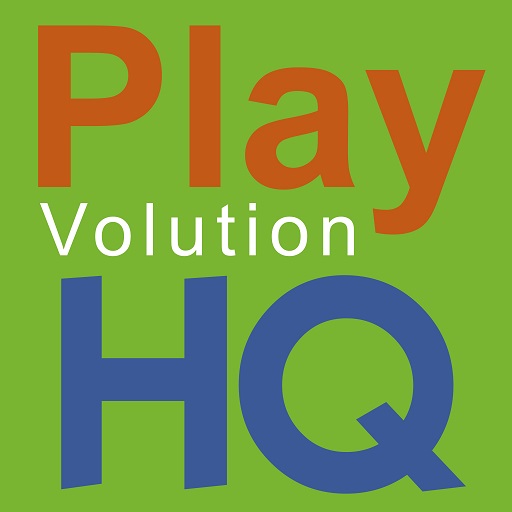
In PHQP 0005 Relationships Are Foundational, Jeff highlights the critical role of relationships in early learning environments. Discussing caregiver burnout, Maslow’s Hierarchy of Needs, and strategies for building strong emotional connections—even with challenging kids—Jeff explains why secure relationships are more important than ABCs and 123s. Plus, he shares a fun DIY project for creating paintbrushes, advocates for caregiver self-care, and wraps up with a Dad Joke of the Week that will make you smile (or groan).
Episode Video
Watch Now: PHQP_0005 Relationships Are Foundational
Episode Notes
- Secure Relationships: Nurturing Infant-Toddler Attachment in Early Care Settings
- Caring Relationships: The Heart of Early Brain Development
- Continuity Of Care
- Maslow’s Hierarchy Of Needs
- Abraham Maslow
- Continuity Of Care
- Social-Emotional Domain
- Caregiver Self-Care
- Delightful And Durable 2-part Epoxy Paintbrushes
Show Notes
- Subscribe | Video Episodes or Audio Episodes
- Contact Jeeves The Intern | jeeves@playvolutionhq.com
- Contact Jeff | podcast@playvolutionhq.com
- Support The Show Via Amazon | Shop Jeff’s Amazon Associate link
- Support The Show With A Membership | Become a member
- Make A One-Time Contribution | Buy us a shot
- Share Content | Share photos and short videos of kids at play
- Visit | Playvolution HQ or Explorations Early Learning
- About | Jeff
- Training | Learn about upcoming online events or booking an event

The Relationships Are Foundational Transcript
Welcome to the Playvolution HQ podcast. Thanks for pushing play. I’m Jeff Johnson on with the show.
So, um, an astute viewer was wondering about my shirt and every episode so far I’ve been wearing a black t-shirt. That’s because I mostly wear black t-shirts or white t-shirts and uh, actually for the podcast I was gonna wear my black t-shirts. It’s not, it may be the same black t-shirt for every episode.
I don’t really keep track of them. I’ve just got a stack of black t-shirts, probably a different black t-shirt, although there might be some black t-shirt overlap, but I just usually buy a bunch of the same black t-shirts and then I wear them until they are worn out and then get some new, some new black t-shirts. This makes life a lot easier, wear the same thing all the time.
Um, moving, moving on from that important bit of information, topic one, core value part five, relationships are foundational. They’re the core of what’s going on in early learning programs and I think a lot of times caregivers feel pressured and pushed to not focus on relationships because there is such a push towards early academics and school readiness that sometimes we are pushed towards attending to those things more than we do the one-on-one here and now interactions with kids and that’s a problem because we are, we are social animals. We need physical contact.
We need to feel safe and comfortable and valued and appreciated and loved by the people around us and in a lot of early learning programs when staff are feeling pressured to keep up with paperwork and checklists and learning outcomes and school readiness activities and STEM and being rigid, um, learning environments and all of this, we, we forget about the soft, cuddly aspects of, of this work with young human beings.
The social side of things, the relationship side of things are more important than the ABCs and one-two-threes and, and look, last episode, we talked about learning risks and how those are important. It is very, very difficult for a young child to put them out, put themselves out there and take a physical or social or emotional or intellectual risk if they don’t feel a foundational sense of security and, and comfort in their environments and so building strong emotional environments is the basis for all the ABCs and one-two-threes that come after it, but sometimes we flip-flop this.
We focus on the ABCs and one-two-threes first instead of on, on building and maintaining those relationships. Building relationships saps emotional resources. It’s a big cause of burnout in this profession.
There’s not a lot of research done on this. Best numbers I’ve been able to find and, and these are old is that 30 to 40 percent of caregivers leave this work annually because of burnout-related, um, issues and that, that, the, that emotional giving they do all day long is part of that burnout because caregivers are wonderful at tuning into the needs of others but fall short a lot of times in meeting their own needs and if you don’t recharge yourself, you, you don’t come in prepared for that here and now interaction that we talked about in an earlier episode. I think it was episode three.
Uh, caregiver self-care is vital and usually lacking is a one-sentence takeaway if you’re looking for that when it comes to relationships. Risk-taking, like I said, is easier when you feel safe, secure, and valued, putting yourself out there and so it’s really, it’s really vital that we as professional caregivers focus on those emotional relationships we have with kids, um, and we got to do this even, even toward the kids we don’t like and I don’t know.
Maybe it’s sacrilegious or something for me to say this but, and, and, and because, I mean, caregivers are supposed to like all the kids and love all the kids and all that but, but look, let’s face it, sometimes there are kids in your program that are hard to like because temperamentally, um, you may not click with them because you find them extra challenging because you find them maybe a lot like you and you see yourself in them and that causes conflict a lot of times. Even with those kids, we need to work on building strong, solid, deep relationships.
Topic two, related, Maslow’s Hierarchy of Needs. So this is a handout I’ve got over at the Playvolution HQ site, um, it’s been up there for a couple, two or three years since I did the last revision, it’ll be in the episode notes, um, so Maslow’s Hierarchy, that emotional stuff that I’m talking about is really the, the basic needs part of Maslow in a lot of, a lot of ways. The relationship building is really, um, helping make sure that they’ve got all the things they need for their existence.
They’ve got full bellies and that they’re well rested but also that, um, their body is secure and they have security in their resources and security of health, um, and it’s just about, about helping kids build this emotional foundation where they, they feel kind of, they feel free to be themselves and move on to those, those upper echelons of, of Maslow’s Hierarchy.
The belongingness and love needs, friendship, family, intimacy, all of that, those bottom three tiers of Maslow’s Hierarchy are all about relationships in, in early learning settings and so, uh, you can check out that handout if you’re, you’re looking for more information along those lines. Moving on, topic three, uh, something totally unrelated, topic three is DIY epoxy paintbrushes and so, look, here’s a, oh, I got blurry if you’re watching the video.
So, here’s an example of that. This is a DIY, uh, two-pronged paintbrush I made. Those bristles are held in there with epoxy.
That’s what this stuff is and I recorded a video earlier explaining how to put these together and we’re going to go to that video now. Hey, Jeff Johnson here with another DIY video for you. This is the third in a series of DIY paintbrush videos.
The whole thing about making DIY paintbrushes is combining the handle and the bristles together and, uh, this time we’re going to be using epoxy to do that and you can do things like this. So, that’s just made up with some little hunks of nylon rope and this is some string in there. You can see it starting to fray at the edges and this is a more dainty one that’s embroidery floss on the end and this guy’s got actually some broom bristles that work out pretty nice.
You can see they’re really in there good. This is a variation on the rope I showed you earlier. This is just some strings and I’ve cut it so it’s going to fray and that’ll be kind of different as it gets used and then just another one with, uh, with broom bristles in it and so the whole thing here is, uh, you’re taking a hunk of wood and you can use a real wooden branch or a wooden dowel.
You’re going to put a hole in the end of it and you’re going to use the epoxy to hook in your bristles. Let’s go to the screen here and show you how to do that. So, first you got to take your branch.
I got a little bit of a curved one here. You can see it’s got that hole in it that’s a one half inch hole in about a one inch, one and a quarter inch piece of branch. You want to be careful when you’re drilling these.
I’m not doing it here in the video just because I’m trying to keep these short but you want to make sure you’ve got that branch really well clamped and secured when you’re drilling into the end of it. That’s something you don’t want to let kids do and then we’re going to be attaching the bristles which are these guys here. I just took some fabric.
I used some masking tape to hold it together there and what you want to do is you want to end up with a bunch of bristles, whatever you decide to use, that fits snugly into the hole you make and you want your hole to be an inch, inch and a quarter deep. Now to the epoxy, you want two-part clear epoxy and there’s a lot of good stuff out there. Now you want to make it simple.
You can see this guy has got the two little nozzles and to use this stuff you take this little thing off the end and you squeeze it down and then you use something like a little hunk of matchstick to stir it together to mix it up together and then you glop that into wherever you’re going to use it and it’s messy. What you want to do is you want to use an epoxy that has one of these self mixers and so you take off the little end cap, you put the little mixer on.
You can see the little swizzles in there as the epoxy, the two parts come out of the tube here as they’re going to mix and then when they reach the end they’re ready to apply and with this you just squeeze that end, you squeeze it down into the hole you’ve made, back off the plunger a little bit and then you take your bristles and you put them in there with a little bit of a twist to get a good glop of connection in there and you wait about 10 minutes and you’re going to have a well secured connection there.
You can see I used cardboard on my tabletop because this stuff is messy. With one tube of epoxy here you can make between five and ten maybe more bristles or brushes and they will be very, very durable. This is of the three videos I’ve done so far, the epoxy is the most durable paintbrush that you’re going to get.
A little bit messier but well worth it if you’re looking for something that’s going to be long lasting. Okay, back from the DIY epoxy paintbrush video. I hope you found that, oh just inspirational and life-changing is how I hope you found it, but give it a try.
They’re really fun and easy to make and if you do I’d love to see photos of your resulting paintbrushes. Let’s wrap this episode up. First, contact me if you’ve got questions, comments, concerns about the show or resources available at the Playvolution HQ site or trainings available at the Explorations early learning site or if there’s anything I can do to help you along your early learning journey.
I love producing this kind of content but really it’s being helpful in promoting classroom change of practice that supports playful learning is what I’m really into. So, reach out if there’s anything I can do to be of help. Amazon idea of the week, this is one I think shared in one of the DIY videos over the Playvolution HQ site about setting up a hammering station for kids.
So, galvanized one-inch roofing nails. So, these are great. Galvanized means that they’re fairly weather resistant.
So, if you’ve got a hammering station set up outside where there might be rain or dew or maybe even snow, they’re not going to rust as readily. One inch is a good size, maybe one and a quarter, one and a half might be better for little fingers. I like roofing nails because they got that bigger head.
It gives kids a bigger target when they’re hammering and they’re relatively inexpensive, $14 for a pack of 500. That’s pretty decent because it’ll take kids a fair amount of time to pound in 500 nails. And again, using the Amazon link is just a way that you can support this podcast and the Playvolution HQ website if you are so inclined.
Next up, of course, like I say every episode, share it if you like it. If you like the show, share it. If you like the Playvolution HQ content, share it.
If you like Maslow’s hierarchy of needs handout, share it. I’m not on the social media and so the way everything grows is by people stumbling across it or having somebody share it with them. So if you’re feeling in the mood of sharing, I’d really appreciate it.
Next week, we’re going to talk about sensory integration and probably go through the eight sensory systems. Dad joke of the week to wrap things up. And look, if you’re wondering, I’ve got dad jokes collected through episode 70 something in July of 2026.
So we’re not going to run out of dad jokes too soon if you were worried about that happening. What did Elsa do with her balloon? She let it go. This here, this here has been the Playvolution HQ podcast.
Thanks for tuning in. Back soon with another episode. Bye-bye.
Contribute content to Playvolution HQ
Brought to you by Explorations Early Learning
Browse Trainings

Podcast (playvolution-hq-podcast-audio): Play in new window | Download (20.5MB) | Embed

Leave a Reply